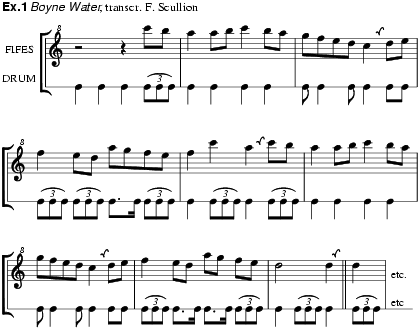
A large double-headed drum associated with the Ulster Orange Order, measuring approximately 90 cm in diameter, 75 cm in depth and weighing about 20 kg, traditionally used for accompanying fife tunes in Orange processions. Among the many myths about its origin is one that it was introduced by Duke Schomberg’s troops at the time of the Battle of the Boyne (1690). However, its name probably derives from the first use of such a drum at a demonstration about 1894 in the village of Lambeg, near Belfast. The ‘Lambeg’, as it is colloquially known, is beaten with bamboo canes: earlier drums were smaller and beaten with boxwood drumsticks.
Although the fife-and-drum bands, playing reel, jig or hornpipe tunes in march time, have largely been replaced by brass bands in the towns, the drum and its playing art have been preserved, mainly as a sport or hobby, and the Lambeg still accompanies certain processions in country districts and in Ballymena. Lambeg drumming contests are held regularly during the summer in which solo drummers display the good tone or ‘ring’ of their drums and their skill in maintaining and ornamenting traditional rhythms. Each district of Ulster has its own march-rhythm dialects based on traditional dance rhythms. Some are based on popular songs. Ex.1 illustrates the relationship between a Lambeg rhythm and its fife tune.

Two families, Johnson and Hewitt, have traditionally been responsible for the manufacture and maintenance of Lambeg drums, though the hard-wearing oak shells need little attention; many drummers have learnt to recover their own shells with the traditional goatskin. Before World War II occasional ‘stick-ins’ were held in which champion drummers, often representing rival families, faced each other in a test of endurance and strength, playing for up to nine hours at a time as the one attempted to outlast the other or to confuse his rhythm.
FIONNUAGHLA SCULLION